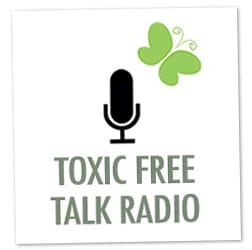
Dietary Toxins: Soy
In college, I was healthy as one could hope for. Yep … healthy. I ate all gluten-free products (if you know my story, then you know where that got me), and made sure I was incorporating soy into my diet. Yep. I muscled my way through Boca burgers, made sure my picnics had those rubber links called Tofurkey dogs (I’m pretty sure everyone faked a smile when they sunk their teeth into those bad boys) , and of course there was my renowned stir fry nights.
I would make all-inclusive stir fry dishes with gorgeous vegetables and, of course, those cardboard-like squares that one could easily bounce off a wall — tofu! In fact, in college I was pretty much known for my imaginative stir fry entrees and was always (poisoning) delighting a crowd with said entrees. I thought I was SOOOOO “in the know.” I was, as my boyfriend would nudgingly call me, the Supreme Goddess of Nutrition.
Well, it wasn’t until I wised up to what dietary toxins are (read post on Dietary Toxins) that I was able to heal myself of a debilitating problem I had, called endometriosis, which, by the way, single handily took me off the grid every month for days and caused me a lot of strife. It was only then that I was able to heal myself completely and truly look and feel my best.
Here’s the point:
Soy is another dietary toxin.
Remember my definition from the previous posts in the multi-art series on Dietary Toxins: The definition of a food toxin — “Anything your body cannot fully utilize, metabolize, digest or eliminate, causing waste and debris in your cells or causing harm to your gut.” I can’t think of a better candidate to meet this criterion than soy. By now, you’re thinking: “Doc, you are crazy town. I’ve always heard and read that soy is healthy. So what are you saying here?”
Well, it’s certainly promoted as a health food. But, ah … welcome to the shady and clandestine world of food marketing. In fact, to market soy as a health food is totally egregious. You’ll find out more in a sec. Another problem, soy is found in everything packaged in our modern world. Pick up a boxed or wrapped food of any kind, and you’ll likely find soybean oil, soy flour, soy isolate, or soy lecithin.
This is why I always need to dig a little deeper when patients tell me there’s no soy in their daily diet. Most people are totally in the dark about how much soy they eat. It’s not just about tofu and veggie burgers. “Doc, Ok we get it…so what the H is wrong with the stuff? Well, here’s a partial “cliff note” version of what you can expect from soy consumption:
- Soy phytoestrogens disrupt endocrine function and have the potential to cause infertility and breast cancer in women.
- Soy contains phytic acid, which reduces absorption of minerals like calcium, magnesium and zinc.
- Processing of soy (like processed soy proteins such as soy burgers, hot dogs, sausage, etc.) results in the formation of lysinoalanine and carcinogenic nitrosamines, both toxic stuff!
- Eating soy increases the body’s need for B12, and D (which many people are already low in).
- MSG, a neurotoxin, is formed during soy processing.
- Men who drink soymilk (approx. 1 cup per day) had 50 percent lower sperm counts than men who didn't drink soymilk. See here.
- Babies fed soy-based formula have 13,000 to 22,000 times more estrogen compounds in their blood than babies fed milk-based formula. Infants exclusively fed soy formula receive the estrogenic equivalent of at least five birth control pills per day.
- Women consuming the equivalent of two cups of soymilk per day provide the estrogenic equivalent of one birth control pill.
- Asians do not consume as much soy as you may think. The average soy consumption of soy foods in China is 10 grams (about 2 teaspoons per day) and about 30 to 60 grams in Japan. This is not much. Basically, soy is used as a condiment – not as a meal or a replacement of animal foods as we do in the US and other western countries.
- The soy we eat is highly processed for the mot part, and we eat a lot more.
- The soy products in Asian countries are fermented and unprocessed. The fermentation makes quite a difference because fermentation (partially) neutralizes the toxins in the soybean.
- Natto
- Tempeh
- Unprocessed Tofu
- Make sure it’s all non-GMO, plant-based food.
So you should no longer suffer through eating soy for the greater good. And if you like the taste? Look for alternatives!
Keep thinking big and living bold!
-Dr. Kellyann







